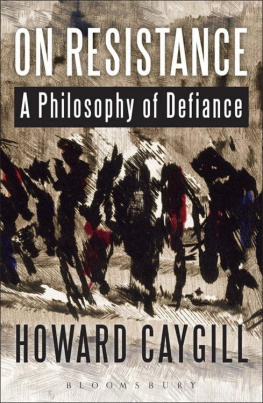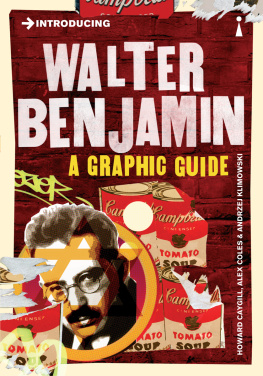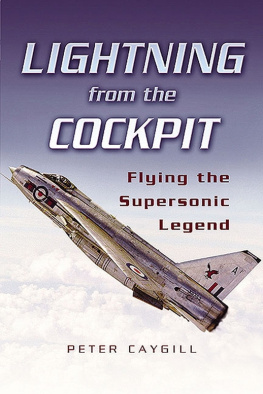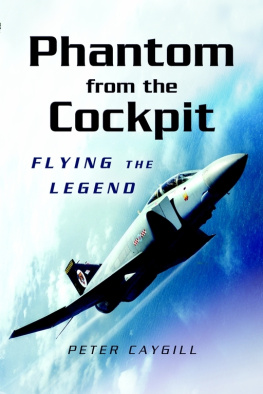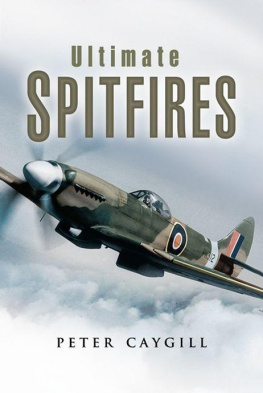Howard Caygill - On Resistance
Here you can read online Howard Caygill - On Resistance full text of the book (entire story) in english for free. Download pdf and epub, get meaning, cover and reviews about this ebook. year: 2013, publisher: Bloomsbury Publishing, genre: Politics. Description of the work, (preface) as well as reviews are available. Best literature library LitArk.com created for fans of good reading and offers a wide selection of genres:
Romance novel
Science fiction
Adventure
Detective
Science
History
Home and family
Prose
Art
Politics
Computer
Non-fiction
Religion
Business
Children
Humor
Choose a favorite category and find really read worthwhile books. Enjoy immersion in the world of imagination, feel the emotions of the characters or learn something new for yourself, make an fascinating discovery.
- Book:On Resistance
- Author:
- Publisher:Bloomsbury Publishing
- Genre:
- Year:2013
- Rating:4 / 5
- Favourites:Add to favourites
- Your mark:
- 80
- 1
- 2
- 3
- 4
- 5
On Resistance: summary, description and annotation
We offer to read an annotation, description, summary or preface (depends on what the author of the book "On Resistance" wrote himself). If you haven't found the necessary information about the book — write in the comments, we will try to find it.
On Resistance — read online for free the complete book (whole text) full work
Below is the text of the book, divided by pages. System saving the place of the last page read, allows you to conveniently read the book "On Resistance" online for free, without having to search again every time where you left off. Put a bookmark, and you can go to the page where you finished reading at any time.
Font size:
Interval:
Bookmark:

ON RESISTANCE
Also available from Bloomsbury
A New Philosophy of Society, Manuel DeLanda
Dissensus, Jacques Rancire
The Universal Exception , Slavoj iek

Yoko Ono
Play It By Trust
1966/date of your show
Mixed media, no. 2/3
Collection Serge Ziegler Galerie
For Piero
On Resistance
A Philosophy of Defiance
Howard Caygill

Contents
As a protest of men attacked in their honour and the right idea that they hold of truth, this resistance has a meaning that exceeds the circumstances in which it was asserted and that it is now important to recapture, no matter how things turn out.
Declaration of the Right to Insubordination in the Algerian War (Manifesto of the 121)
Now is the time to resist
Call to Resist Illegitimate Authority , 1967 Chomsky, Marcuse, Sontag et. al.
But what if my decision to make my years with the resistance public were a sign that it was soon to disappear? Some inexplicable feeling warned me that the rebellion was fading, flagging, was about to turn into the path and disappear. It would be made into epics. I looked at the resistance as if it were going to vanish at any moment.
Jean Genet, prisoner of Love
It is a difficult case. What do you think I ought to do resist? Eh? I want no more than justiceHe wanted no more than justice no more than justice.
Joseph Conrad, Heart of Darkness
T he riots in Paris on October 27th 1960 inaugurated a sequence of events that culminated in the outright defiance of 1968. Proclaimed as a Day for Peace in Algeria by the Left and Trade Unions, the eruption of police violence against demonstrators was continuous with the intensification of the anti-colonial struggle in Algeria and the migration of its violence to the colonial metropolis (Tartakowski 1997, 6717). It followed closely the publication of the Declaration of the Right to Insubordination in the Algerian War or Manifesto of the 121 on September 5th, which cited the French Resistance in a call for civil disobedience and was contemporary with the trial of the resistant Jeansen Network and Jean-Paul Sartres uncompromising Preface to Frantz Fanons The Cursed of the Earth (subsequently banned in France). The calculated use of state violence against the Algerian community in Paris planned and executed by the Parisian pr fect de police Maurice Papon whose qualifications for office included the persecution of the Jews of Bordeaux under Vichy and ruthless colonial repression in Morocco and Algeria (see House and Macmaster) culminated in the hunt and murder of over 200 demonstrators by the police in Paris a year later on 17 October 1961 and the murder of demonstrators at the Charonne Metro Station on 8 February 1962. The official repression was complemented by un- or semi-official acts of terror including bomb attacks on Jean-Paul Sartres home (9 July 1961 and 7 January 1962) and the offices of Les Temps Modernes on May 1961.
These violent episodes from the last days of the Algerian War were haunted by the memory of the French resistance to Nazi occupation and collaboration during the Second World War. The Manifesto of the 121 asked how a state whose legitimacy rested on the morality of the resistance to Nazism could resort to Nazi methods in its dirty war against the Algerian resistance (Blanchot 2010, 1517). The same question was asked by those French citizens of the Jeansen and other resistant networks who took the decision to support the Algerians in their struggle against the French state and who saw their actions as continuous with the resistance to Nazism (see Evans 1997). Yet they could share this perspective with the Organisation de larme secr te or OAS, the paramilitary terrorist group of the right that was also immersed in resistance imagery (Evans 1997, 187); they too considered their counter-insurgent guerre rvolutionnaire or guerrilla war from above as continuous with the wartime resistance. Who then, were the true resistants? What was the connection between the collaborationist past of the Parisian prfet de police and the extreme but calculated exercise of state violence against anti-colonial demonstrators? And how was it possible that the man who issued the legendary call for resistance on June 18th 1940 should now be cast as the grand sorcerer (Sartre) or manifestation of the essential perversion (Blanchot)? And what of the hero of the resistance who received the Croix de guerre in 1945 for his heroic service and who now, in The Cursed of the Earth , called for absolute resistance to the colonial French Republic? Informing such questions is a perplexity about the nature of resistance: is it reactive and part of an escalating reciprocal movement of repression provoking resistance that in turn intensifies counter-resistance or is it the perennial defiance of oppression and injustice?
Sartres 1961 essay An Unprivileged Painter written for the catalogue of an exhibition by Robert Lapoujade Paintings on the Theme of the Riots, Tryptich on Torture, Hiroshima held at Galrie Pierre Domec between 10 March and 15 April 1961 and then collected in Situations IV, views the painting of a riot October 27th in the context of a perplexed resistance.
And then, suddenly, there is a streak of asphalt: the void. This overflows and runs off to the bottom of the canvas. But is there a top or a bottom? The space is itself a meaning ; it is composed by the crowd and is determined as a function of the crowds acts. This streak is, simultaneously, a thick downward plunge and a flight to the horizon; it matters little which. It is the sudden opening-up of the void: the police are charging. Are we going to run or resist? Whatever we do, the space exists with all its dimensions in one: it is distance which shrinks on one side and on the other, seems interminable. (Sartre, 569)
It is a familiar scenario, one replayed recently in the Arab insurgencies, the resistance of the indignados and aganaktismenoi , the global eruption of the Occupy movement, the Taksim Republic and their violent repression. Sartre reads Lapoujades mark as a moment of decision: the viscosity and void of the streak of paint condenses the intensified experience of space and time characteristic of the moment of resistance and the formation of a capacity to resist. Sartre sketches a phenomenology of this defiant moment in which street and square are suddenly no longer unobtrusively present at hand but are instead invested with ambivalent and threatening properties. With the rapidly diminishing distance between the police charge and the stand or stasis of the immobile demonstrators, the urban space becomes void, at once contracting and expanding to the horizon. Sartre identifies this experience as a function of the crowds acts, and the stretching and contraction of urban space manifests the crowds indecision. At the moment of a Kierkegaardian either/or Are we going to run or resist? the street assumes dramatic spatial and affective properties routinely inconspicuous but now captured in the artists mark. The meaning of the space has changed from routine to exception and the question of flight or defiance envelops the entire scene, making it seem the ritual space for staging either an authentic resistance or an inauthentic flight.
Font size:
Interval:
Bookmark:
Similar books «On Resistance»
Look at similar books to On Resistance. We have selected literature similar in name and meaning in the hope of providing readers with more options to find new, interesting, not yet read works.
Discussion, reviews of the book On Resistance and just readers' own opinions. Leave your comments, write what you think about the work, its meaning or the main characters. Specify what exactly you liked and what you didn't like, and why you think so.

